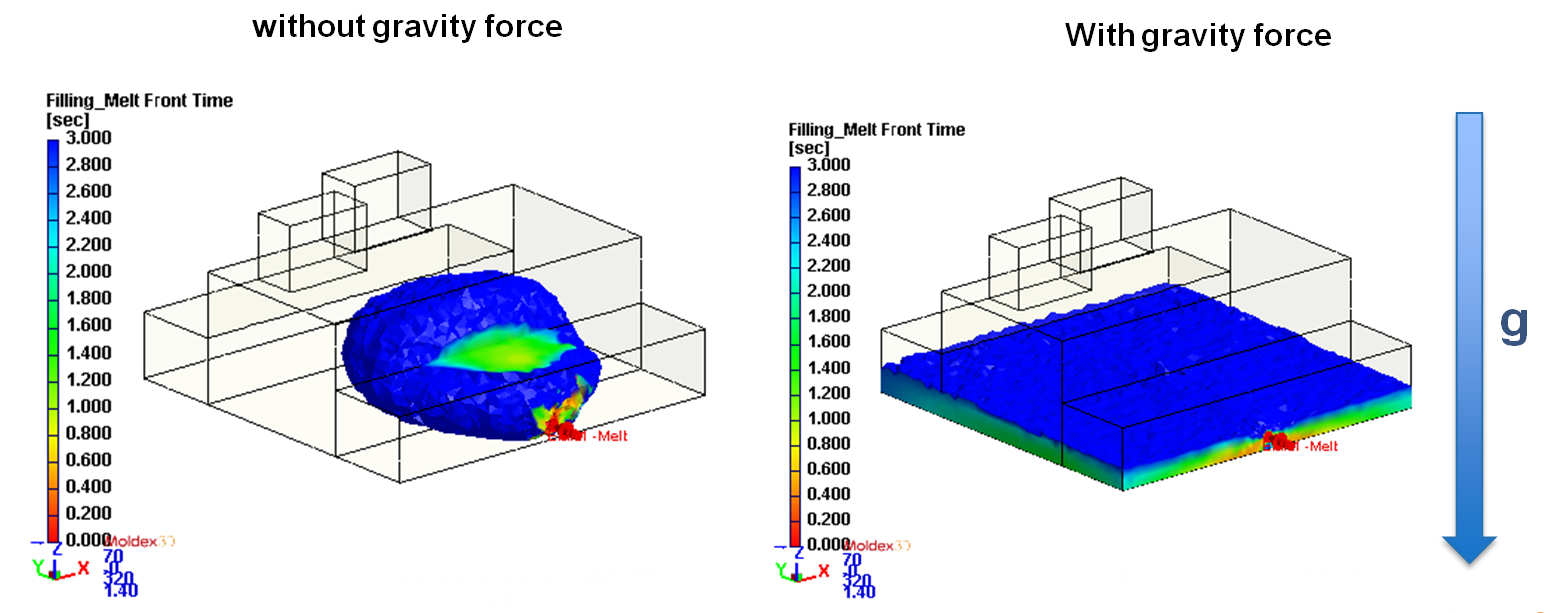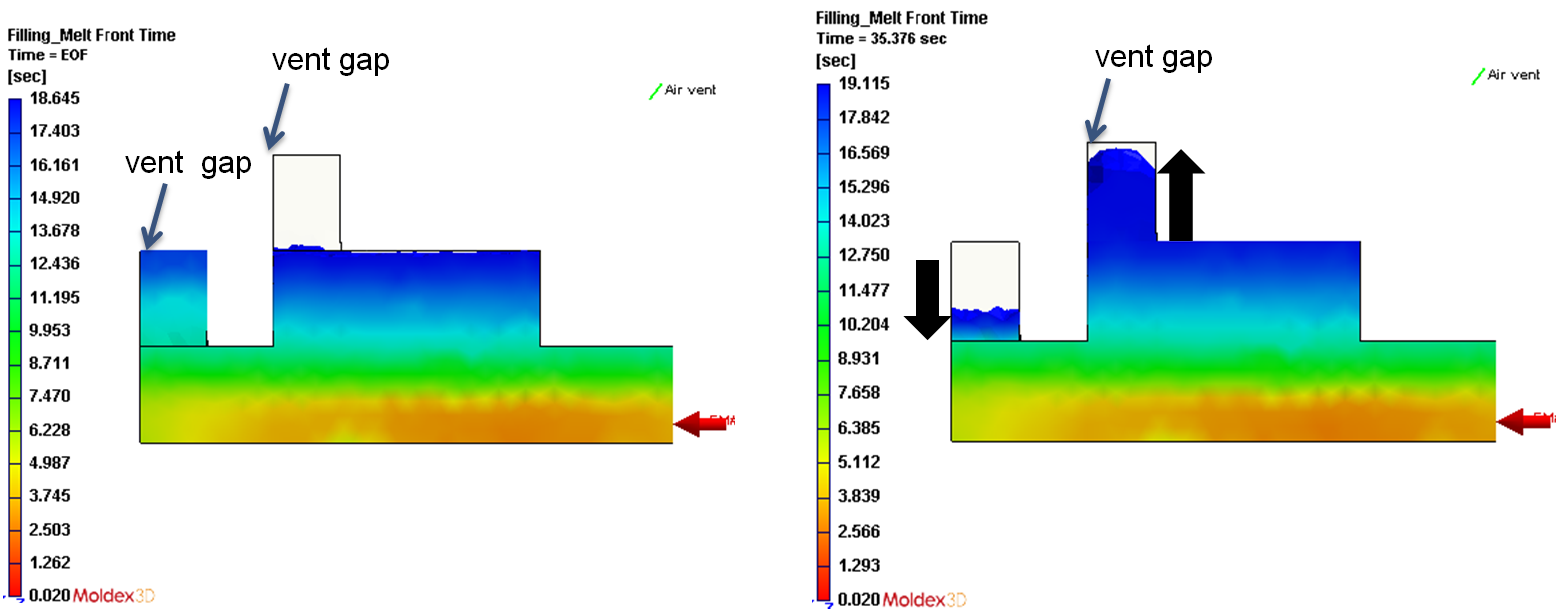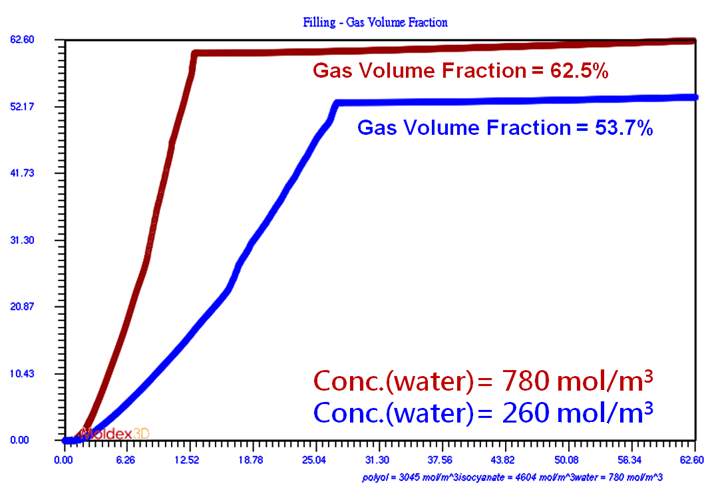Chemical Foaming Molding (CFM) is a molding process in which the cavity will be filled by the gas produced through chemical reactions. Polyurethane (PU) foam molding is the most common molding process of chemical foaming molding. Polyurethane foam has flexibility and high elasticity, so it can be used in various industries such as automotive (dashboard, steering wheel and seat), refrigeration (refrigerator insulation layer, insulation sandwich), footwear (soles) and medical (bed mattresses). The major challenge of chemical foaming process is how to have the mold cavity filled with less material without causing short shot. Short shot occurs when the material is not enough to fill the cavity, the foaming gas amount is insufficient, or the polyurethane curing rate is too high. However, when too much material is injected, it will cause a great amount of material waste.
Moldex3D PU Chemical Foaming Module supports the Polyurethane (PU) foam molding analysis, and considers curing kinetics and foaming kinetics at the same time. With the polyurethane foaming simulation, users can more accurately predict the filling and foaming behavior of polyurethane, and optimize the injected material amount and process conditions.
In foaming process settings, the shot control parameter can be set through volume percentage (%), shot volume (cm3), and shot weight (g) to stop the melt from getting into the cavity after it is filled with the amount defined by the user. The end of foaming calculation time can also be controlled in Advanced Setting. Â At the post-processing stage, users can find the analysis results of filling, packing and cooling stage, ex: melt front time, density, temperature, conversion, foaming conversion, cell size, cell density, and final warpage.
Furthermore, some important factors including gravity, venting locations, water (blowing agent) concentration, whether to use foam rotation molding, can also affect the foaming behaviors. If the molding simulation considers gravity force, low viscosity PU foam will flow along the bottom of the cavity (Fig. 1). Through vent gap setting, air will be exhausted and it will make the melt flow unobstructed; otherwise, without the vent gap region in the cavity, compressed air will be formed and flow resistance will be increased (Fig. 2). Finally, higher water concentration may lead to faster foaming and shorter filling time; this is also considered in Moldex3D simulation (Fig. 3).

Fig. 1 The simulation results with/ without considering the gravity force
Â

Fig. 2 The vent gap locations affects flow behaviors

Fig. 3 Different water concentrations will lead to different gas foam reaction rates
The 3D polyurethane chemical foaming process simulation of Moldex3D PU Chemical Foaming Module allows users to more easily determine the appropriate production conditions through filling /foaming analysis. Moreover, in PU Chemical Foaming Module, intelligent wizard and post-processor features can help users diagnose defects earlier and make necessary design changes. This is a very useful tool for shortening time-to-market in actual manufacturing.
Heat Sealing Machine,heat sealer,bag sealer machine,bag sealer
GUANGZHOU TUSEN MACHINERY & EQUIPMENT CO., LTD , https://www.gztusen.com